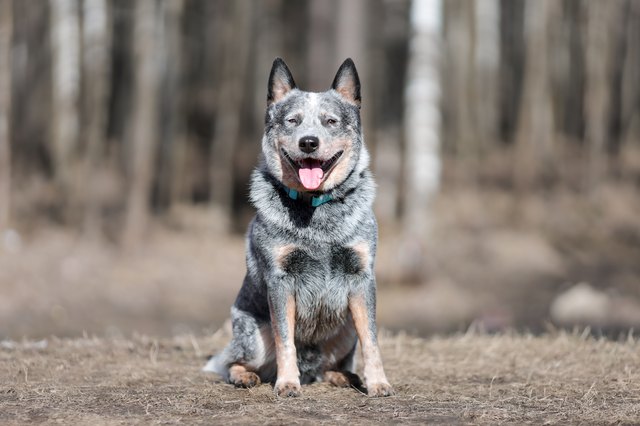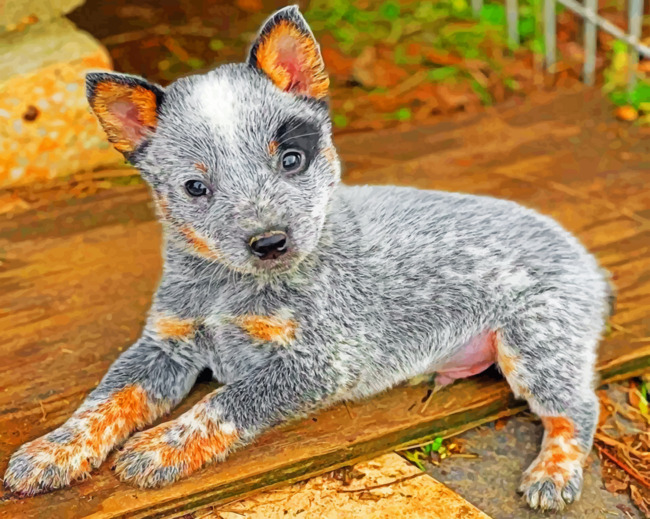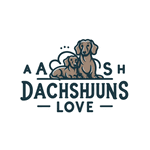The Blue Heeler Dachshund mix, often referred to as the Aussie Doxie, is an exciting hybrid breed that combines the herding instincts of the Australian Cattle Dog (Blue Heeler) with the independent and feisty nature of the Dachshund. This unique mix creates a dog brimming with personality, intelligence, and energy, making it a fascinating companion. However, like all mixed breeds, the Blue Heeler Dachshund mix may inherit different traits from its parent breeds, making each one distinct in its own way. Let’s dive into the traits, training needs, and care requirements of this special hybrid.
Contents
- 1 Understanding the Parent Breeds: Blue Heeler and Dachshund
- 2 Appearance and Size: A Blend of Compact and Muscular
- 3 Temperament and Personality: Balancing Energy with Stubbornness
- 4 Training and Exercise: Mental and Physical Stimulation is Key
- 5 Health Concerns: Potential Inherited Conditions
- 6 Living with a Blue Heeler Dachshund Mix: Creating a Happy Home
- 7 Conclusion
Understanding the Parent Breeds: Blue Heeler and Dachshund

The Blue Heeler (Australian Cattle Dog)
Blue Heelers are known for their boundless energy, intelligence, and loyalty. Bred for herding livestock, these dogs are highly focused, alert, and possess strong instincts to protect and herd. Their herding drive may lead to behaviors like nipping or chasing, which can be managed with proper training and socialization. Their independent nature and strong will can make them challenging to train, especially for first-time dog owners. However, with mental and physical stimulation, they excel in various tasks, making them wonderful working dogs and attentive companions.
The Dachshund
The Dachshund, also known for its long body and short legs, was originally bred for hunting. This small but mighty dog is known for its curious, adventurous spirit and strong prey drive. Dachshunds are fiercely independent, often displaying a bit of stubbornness, but they are also incredibly loyal and affectionate with their families. Despite their size, they’re not afraid to show their bravery and are known for their protective nature.
Appearance and Size: A Blend of Compact and Muscular

The Blue Heeler Dachshund mix is a small to medium-sized dog, typically weighing between 15 and 30 pounds and standing between 12 and 18 inches tall at the shoulder. Their physical traits can vary depending on which parent breed’s genes are more dominant.
Coat and Color
This hybrid often inherits a coat that combines colors from both parents, such as blue merle, red, or black and tan. Some may have a smooth coat like the Dachshund, while others may sport a wiry or thicker coat like the Blue Heeler. Grooming requirements will vary depending on the coat type, but regular brushing is generally necessary to keep their fur healthy and clean.
Temperament and Personality: Balancing Energy with Stubbornness
The temperament of a Blue Heeler Dachshund mix can be a lively mix of both parent breeds’ best and most challenging qualities.
- Intelligence and Independence: Both the Blue Heeler and the Dachshund are smart and independent, which means this hybrid can be both quick to learn and stubborn. Positive reinforcement is essential to training, but patience and consistency are key to overcoming their independent streak.
- Energy and Drive: The Blue Heeler brings high energy and drive, making daily physical activity a must. However, the Dachshund’s adventurous and curious nature will also drive them to explore, making supervision necessary.
- Loyalty and Affection: Both parent breeds are known for their loyalty, so expect your Blue Heeler Dachshund mix to be a devoted companion, eager for attention and affection. They may also develop protective instincts, making early socialization important to avoid overly territorial behaviors.
Training and Exercise: Mental and Physical Stimulation is Key

Training a Blue Heeler Dachshund mix requires patience, creativity, and consistency. Here’s what to keep in mind:
Training Tips
- Positive Reinforcement: Reward-based training is most effective for this mix. Use treats and praise to encourage desired behaviors, as both the Blue Heeler and Dachshund can be stubborn.
- Short, Engaging Sessions: Keep training sessions short but stimulating. These dogs need both mental and physical challenges to remain happy and well-behaved.
- Early Socialization: Introducing them to different environments, people, and animals early on will help them become well-adjusted, reducing the risk of aggressive or fearful behavior due to their herding instincts.
Exercise Requirements
Due to their high energy levels, daily exercise is essential. A Blue Heeler Dachshund mix will need:
- Walks: At least 30–60 minutes of walking or active play daily.
- Interactive Games: Engage in games like fetch or tug-of-war to burn off their energy.
- Mind-Stimulating Activities: Puzzle toys or training exercises can help keep their intelligent minds sharp.
However, it’s important not to overexert them, especially with their Dachshund side’s compact body. Be mindful of joint health and avoid overly strenuous activities.
Health Concerns: Potential Inherited Conditions

While mixed breeds tend to benefit from genetic diversity, Blue Heeler Dachshund mixes can still inherit health conditions from both parent breeds. Here’s a look at some potential health concerns:
Blue Heeler Health Issues:
- Hip and Elbow Dysplasia
- Collie Eye Anomaly
- Deafness
- Progressive Retinal Atrophy
Dachshund Health Issues:
- Intervertebral Disc Disease (IVDD) (especially due to their long backs)
- Patellar Luxation
- Eye Problems (like cataracts and glaucoma)
- Epilepsy
Regular veterinary check-ups and preventative care are crucial for maintaining their health, including a nutritious diet, exercise, and early intervention if health issues arise.
Living with a Blue Heeler Dachshund Mix: Creating a Happy Home

If you decide to bring a Blue Heeler Dachshund mix into your life, it’s essential to meet their specific needs:
Living Space
Due to their energy levels, this hybrid is best suited for a home with space to run, such as one with a fenced-in yard. They may not do well in apartments or places with little access to outdoor play areas.
Grooming Needs
Grooming requirements vary based on the coat they inherit:
- Smooth Coats: Weekly brushing should suffice.
- Wiry Coats: More frequent grooming may be needed to avoid matting. Routine ear cleaning, nail trimming, and dental care should also be incorporated into their care regimen.
Challenges
While this breed is loving and loyal, potential challenges include:
- Separation Anxiety: Both parent breeds form strong bonds with their owners, so it’s important to provide them with companionship and mental stimulation to prevent anxiety.
- Destructive Behavior: Due to their high energy and intelligence, a bored Blue Heeler Dachshund mix can become destructive, so regular exercise and mental challenges are essential.
Conclusion
The Blue Heeler Dachshund mix is an energetic, loyal, and intelligent companion that combines the best (and sometimes most challenging) traits of its parent breeds. With proper training, socialization, and exercise, this hybrid can make an excellent addition to an active household. Whether you’re an experienced dog owner or willing to invest time in their care, the Aussie Doxie is sure to bring joy, excitement, and a touch of wild energy into your home.
